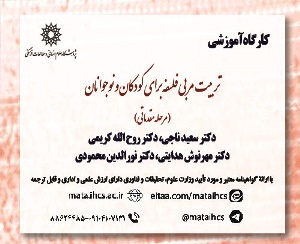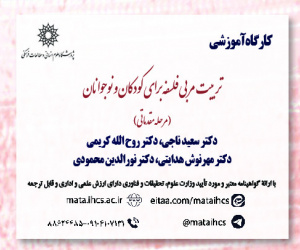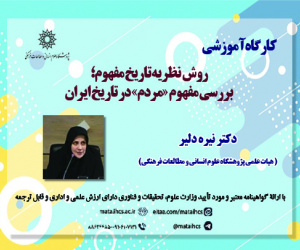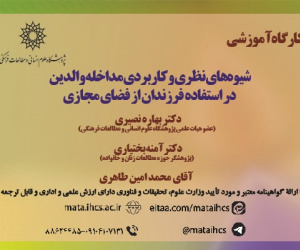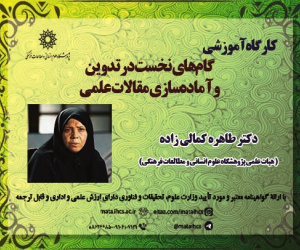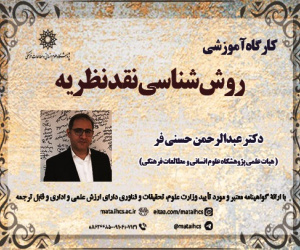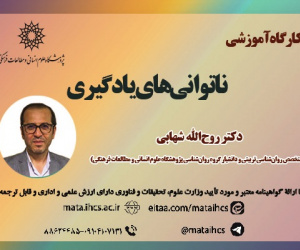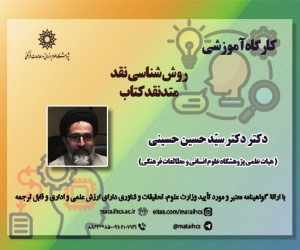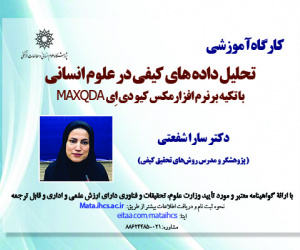ارزیابی و تحلیل فضایی مؤلفه های مؤثر بر شهر شاد (مطالعیه موردی: کلان شهر اصفهان) (مقاله علمی وزارت علوم)
درجه علمی: نشریه علمی (وزارت علوم)
آرشیو
چکیده
در راستای تحقق حقوق شهروندی و توسعیه پایدار فضاهای شهری، طی سالیان اخیر نظریه پردازان و برنامه ریزان شهری و منطقه ای مفاهیم متعددی را مطرح کرده اند. شهر سالم، شهر دوستدار کودک، شهر سبز، شهر الکترونیک، شهر شاد و... از این مفاهیم کلیدی هستند. در این میان شهر شاد با دربرگرفتن شاخص ها و متغیرهای متعددی، اهمیت و جایگاه ویژه ای دارد، به گونه ای که متضمن سلامت روحی و جسمی شهروندان است. پژوهش حاضر ماهیتی توسعه ای-کاربردی و روشی توصیفی-تحلیلی دارد و با هدف ارزیابی مؤلفه های مؤثر بر شاخص های شهر شاد کلان شهر اصفهان انجام شده است. داده های مورد نیاز با استفاده از مطالعات کتابخانه ای و بررسی میدانی در سطح خانوار جمع آوری، و حجم نمونه با استفاده از فرمول کوکران معادل 315 خانوار برآورد شد. با بهره گیری از روش های کمی و آماری ازجمله رگرسیون چندگانه در محیط نرم افزار SPSS، معادلات ساختاری در محیط نرم افزار LISREL و تحلیل چندمتغیریه فازی در محیط GIS، به بررسی میزان شاخص های شهر شاد و اولویت بندی مؤلفه های مؤثر در منطقیه مورد نظر پرداخته شده است. یافته ها نشان می دهد که در کلان شهر اصفهان، شاخص های شهر شاد متوسط رو به بالاست؛ از لحاظ برخورداری از شاخص های شهر شاد هم به ترتیب اولویت، شاخص های کالبدی، اجتماعی و اقتصادی با 511/0، 287/0 و 266/0 درصد بیشترین نقش را در شاخص های شهر شاد کلان شهر اصفهان دارند که نشانگر مهم بودن بعد کالبدی نسبت به بقییه ابعاد است. همچنین درخصوص شاخص های شهر شاد در کلان شهر اصفهان بیشترین مساحت مربوط به طبقیه متوسط زیاد و بسیار زیاد با مقدار 394 کیلومتر مربع است.Spatial assessment and analysis of the factors affecting a happy city (Case study: Isfahan city)
IntroductionConsidering the importance of the indicators of a happy city in improving the quality of life of citizens and overall significant impact in achieving sustainable urban development, examining the status of a happy city and the factors affecting it can be an essential tool for improving the level of a happy town by city managers and those involved in the development of the metropolis. Isfahan. In this regard, the evaluation of each of the quality indicators of the urban environment in three physical, economic, and social dimensions has been done. This research was conducted to answer the question, What is the level of Isfahan metropolis in terms of happy city indicators? Which components have had the most significant influence on the city's indicators?MethodologyThe purpose of this research is applied-developmental research. In terms of its nature, it is a descriptive-analytical research, and the research method is correlational analysis. Two library and field methods have been used to collect the information needed for the research. The research area is the metropolis of Isfahan. The data analysis in this research was done in two stages. In the first stage, to measure the status of the happy city indicators in the study area, the study's sample size was estimated to be 315 households through Cochran's formula. In this research, a random sampling method was used, the sampling error level was 5% and the samples were selected with a confidence level of 95%; In the GIS environment, the samples were randomly selected using the Hawths Tools function; From the Sampling Tools menu, by selecting the Generate Random Points option, 315 samples were chosen as points. The validity of the questionnaire was also determined using the pre-test, and its reliability was assessed using Cronbach's alpha in the SPSS software environment, which indicates the high consistency and reliability of the data.Research FindingsAccording to the factor loadings extracted in the standardized model in the LISREL software (Table 3) in Isfahan metropolis, it is stated in this way that out of 35 components, 27 components were selected as practical components (with different effect intensity), into nine indicators. Physically, nine components out of 13 social indicators, 10 components, and eight components out of 13 economic indicators were left as practical components, and eight components were omitted due to the coefficient being less than 0.3%. On the other hand, it should be noted that in the physical index, the quality of lighting at night with a factor load of 0.93 is the most relevant and influential; In the social dimension, the level of satisfaction with feelings and mental health with a factor load of 0.91, the level of satisfaction of the residents with the income of the head of the household, the job security of the head of the household, in the economic dimension of the household with 0.79% are the priority. Conclusion Today, cities have become fragmented and chaotic places, significantly affecting the residents' vitality. The rapid growth of urbanization in the metropolis of Isfahan has caused critical and spiritual problems, and the increase in social vitality and the factors affecting the happiness of citizens can effectively solve these problems. Therefore, it is necessary to evaluate each of the indicators of the happy city and identify the influential factors in its promotion. Therefore, in line with the research hypotheses, the main goal of this research is to measure the indicators of a happy city by relying on the practical physical and social components. It is economic in the metropolis of Isfahan; The results of the research show that Isfahan metropolis, in terms of having happy city indicators, in order of priority, physical index with 0.511%, social index with 0.287% and finally economic index with 0.266% have the most role in the city indicators. have been happy in the studied area, which indicates the importance of the physical dimension compared to other dimensions.Comparing the current research with other researches, Oraki et al. (2018) analyzed the spatial factors affecting the happy city from the perspective of the citizens, and the researcher's findings show that the most important influencing factor is the physical characteristics, including the quality of the landscape, which The present research is consistent. Gemini et al. (1400) evaluated and analyzed the state of the happy city and identified its determinants in small urban spaces. They concluded that physical-spatial structure has the most role in social vitality, and low participation has the least role. It is effective. Also, Samavati et al. (2017) identified factors affecting happiness in urban public spaces, and the results of multiple regression analysis showed that at the level of social characteristics, the sub-index of satisfaction with feeling and physical health has the most significant effect on the level of a happy city. It is consistent with the present study.

